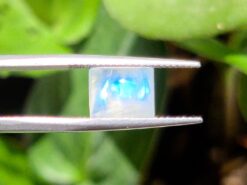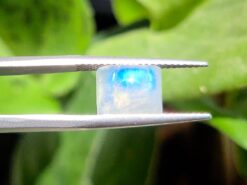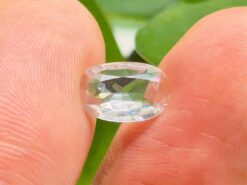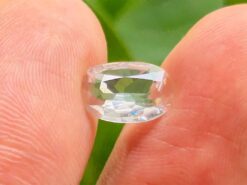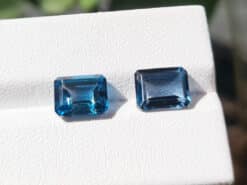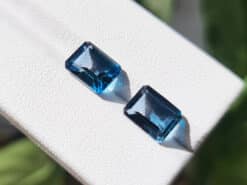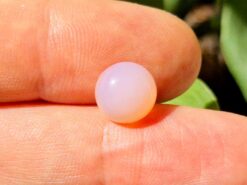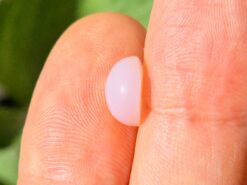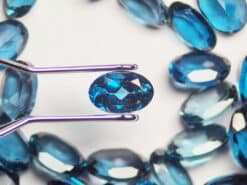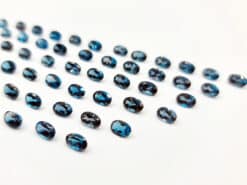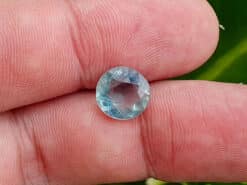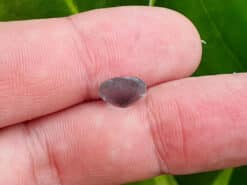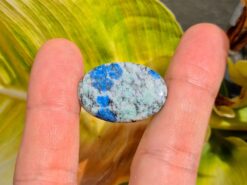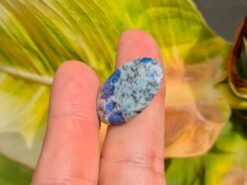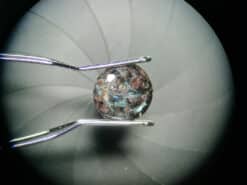Man-made glass
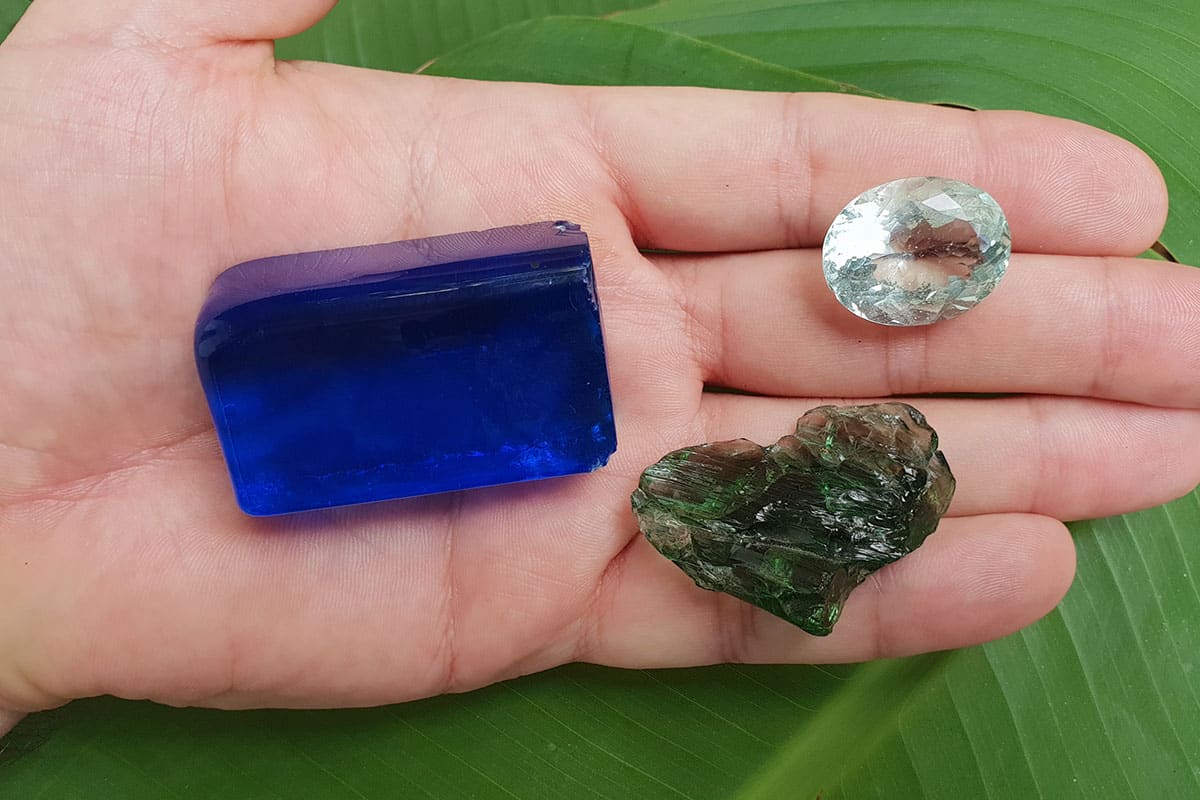
Man-made glass is one of the oldest known imitations used to replicate the appearance of genuine gemstones. Throughout human history, people have worked with glass to reproduce the sparkle and brilliance of natural stones, attempting to mirror their beauty at a more accessible cost. While it can sometimes fool an untrained eye, the differences between man-made glass and authentic gemstones are often quite apparent to experts, owing to its distinct physical and chemical properties. Its production techniques have evolved significantly over time, reflecting advancements in craftsmanship, cultural exchange, and technological innovation.
Buy natural gemstones in our shop
When it comes to identifying man-made glass as a gemstone imitation, several key factors make this task relatively straightforward. Compared to genuine minerals, glass possesses a notably lower hardness, resulting in a surface that is more easily scratched. Its luster is often different as well, lacking the depth and complexity found in most natural stones. Inclusions within glass—often tiny bubbles—tend to be very distinct from those present in authentic gems. Moreover, glass can be melted at much lower temperatures, making its production simpler and less resource-intensive than that of natural gemstones.
Despite being a modest imitation, man-made glass still plays a prominent role in the fashion jewelry industry. In fact, it dominates large segments of the market, both in terms of volume and overall financial value. Its affordability, ease of production, and versatility in shaping and coloring make it highly attractive to mass-market jewelry manufacturers, ensuring that glass continues to be a major player in the global trade of decorative ornaments.
History
Man-made glass production dates back thousands of years. Evidence suggests that it was being crafted as early as 3500 BC in Mesopotamia, where artisans may have been replicating techniques and styles borrowed from Egyptian glassmakers. It is believed that the earliest glass technologies emerged in coastal regions of northern Syria, Mesopotamia, or Egypt, contributing to a vibrant tradition of glassmaking that would gradually expand to numerous cultures.
Origins
The earliest known glass objects, dating to the mid-second millennium BC, primarily consisted of beads. Some of these may have been created accidentally as by-products of metalworking or through the production of faience—a non-glass vitreous material. Over time, artisans learned to control the heating and cooling of molten materials to achieve desired shapes and colors. Initially rare and precious, glass items were often treasured luxuries within ancient societies.
Evolution of Craftsmanship
As glassmaking techniques improved, the material’s applications broadened. However, the collapse of late Bronze Age civilizations momentarily halted advances in glass production. Even so, the craft reemerged and flourished in various regions, including India around 1730 BC, and made its way into ancient China, where it faced competition from the already well-established traditions of ceramics and metalwork.
Cultural Spread
Eventually, the Roman Empire became an important hub for the distribution and refinement of glass, producing a wide range of glass goods that archaeologists continue to uncover. Over centuries, glass objects spread across Europe, the Middle East, and beyond, reflecting a tapestry of cultural exchanges, technological progress, and artistic innovation. Each region adapted the craft to fit local tastes, needs, and religious or social customs.
Man-made glass
Man-made Glass in Jewelry
Beyond domestic and industrial uses, glass quickly found a place in personal adornment. In Anglo-Saxon England, for instance, glass frequently appeared in a variety of contexts, including both settlement and burial sites. Early Anglo-Saxon artisans incorporated glass into an assortment of objects: vessels, beads, windows, and intricate pieces of jewelry.
Early Usage in Ornamentation
After the departure of the Romans from Britain in the 5th century AD, the use of glass experienced notable shifts. Roman-era excavations have revealed copious amounts of glass, but by the early Anglo-Saxon period, the quantity diminished significantly. Much of what we know about the early use of glass in adornment stems from grave excavations, particularly in cemeteries, where glass beads and vessels were placed alongside the deceased. This practice, however, changed with the advent of Christianity.
Shifting Burial Practices
By the late 7th century, evolving burial traditions among Christian Anglo-Saxons meant fewer grave goods were interred with the deceased. As a result, glass objects are rarely found in later-period cemeteries. The scarcity of glass artifacts from these contexts can be directly linked to a cultural pivot towards more modest burial practices, reflecting changes in religious belief, social values, and trade patterns.
Religious Influences and Architectural Uses
With the increasing influence of Christianity, the presence of glass shifted from burial objects to architectural features. Window glass became more common in churches and monasteries, shedding light—both literally and figuratively—on the growing importance of glass in sacred spaces. Anglo-Saxon ecclesiastical documents occasionally reference the use of glass in religious buildings. Additionally, Anglo-Saxon jewelers incorporated glass into their creations either as enamel or as carefully cut insets, blending artistry and faith into sophisticated ornaments.
FAQ
Is man-made glass considered a genuine gemstone?
No, man-made glass is not a genuine gemstone. It is a synthetic material that imitates the appearance of real stones but lacks the natural geological formation, crystal structure, and hardness characteristic of authentic gems.
How can I tell if a piece of jewelry contains man-made glass?
Man-made glass often shows tiny bubbles, a lower hardness, and a different type of luster compared to natural gemstones. Professional gemologists use tools such as magnification and hardness testing to identify glass, but even an attentive consumer may notice differences in clarity and feel.
Why is man-made glass widely used in the fashion jewelry industry?
Its affordability, ease of production, and wide range of colors and styles make man-made glass a practical choice for mass-market jewelry. It allows designers to create attractive pieces at a lower cost than most natural gemstones.
Does man-made glass have any specific cultural significance?
Glass has historically carried both aesthetic and cultural importance. While it does not hold the same rarity or monetary value as natural gemstones, it often symbolizes craftsmanship, innovation, and artistic expression, especially in cultures where glassmaking traditions are long-standing.
Can man-made glass replicate the durability of natural gemstones?
Generally, no. Man-made glass tends to be softer and more prone to scratching and breaking than genuine stones. As a result, pieces made entirely of glass may not withstand everyday wear as effectively as those featuring more durable natural gemstones.

